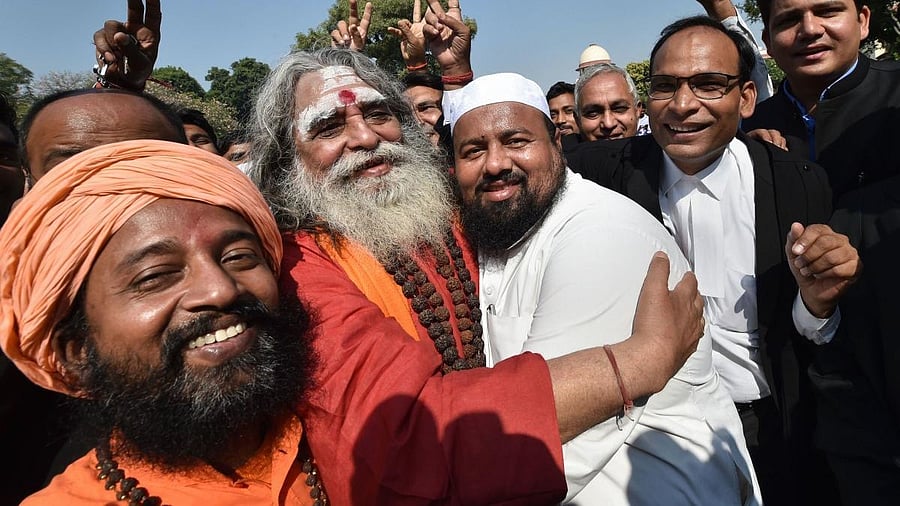
Much attention to date has focused on how India’s religious and caste divides have become political fodder. In fact, tensions between Indian states may be even more dangerous.
Credit: PTI Photo
By Mihir Sharma
India’s weeks-long election is drawing to a close. Between now and June 1, the remaining 164 of 543 constituencies in the lower house of India’s parliament will vote. Much attention to date has focused on how India’s religious and caste divides have become political fodder. In fact, tensions between Indian states may be even more dangerous.
Those divisions will be on full display in these last few days of campaigning. Only three states vote in every single one of the seven phases of India’s election, which began on April 19: giants Uttar Pradesh and Bihar, which with a combined population of 35 crore would together be the third-largest country in the world, and smaller West Bengal, which since the 1970s has always been ruled by a different party from that in power in New Delhi.
If the two behemoths have staggered elections because they are so large, West Bengal’s voting is spread over seven days to limit the risk of riots. Political violence has become a major electoral issue in the state in recent years, exploited by all sides of the political spectrum.
As Prime Minister Narendra Modi’s Bharatiya Janata Party has emerged as a challenger to the dominant regional party, the All India Trinamool Congress, it has accused the incumbents of overseeing a decline in law-and-order. Modi has said that violence is the “biggest challenge” the state faces.
Meanwhile, the Trinamool Congress has stoked local fears, blaming a 2019 riot on Kolkata’s streets on “outsiders” that the BJP had bused in from neighboring states. Much was made of the toppling of a statue of revered Bengali social reformer Ishwar Chandra Vidyasagar. The message to Bengalis: The BJP is a north Indian party with no respect for our culture, and they will bring violent ways of life from other Indian states to our door.
India’s southern states are also wary of an overbearing north. Regional parties lead opposition to the BJP in the south, as in eastern states such as West Bengal, and they, too, are increasingly designing their politics around “outsiders” and threats to federalism. Tamil Nadu Chief Minister M K Stalin warned during his campaign that “states would cease to exist” if the BJP won another election. For his part, Modi last week accused southern politicians of insulting the north and Hinduism.
Real-world trends will only exacerbate these divisions, as my Bloomberg Opinion colleague Andy Mukherjee has pointed out. The southern state of Kerala has a human development index approaching that of China, Brazil or Mexico, while many north Indian states score closer to the poorer parts of sub-Saharan Africa.
The economies of states such as Tamil Nadu are growing much faster than the national average; they give far more to federal coffers than they receive. Much of the difference flows to poorer northern states such as UP.
The north could gain even more political power as its population expands. Official projections suggest that West Bengal’s population will hover around 10 crore over the next few decades. By contrast, UP and Bihar will add that many people over the same period. Bihar’s population will grow by 25 per cent in two decades, Tamil Nadu’s by 2 per cent. The next government will preside over a redistricting exercise in 2026 that could expand the north’s representation in Parliament, fueling concerns that the south and east will be permanently locked out of power in New Delhi.
For decades, multi-ethnic India has enjoyed healthy political competition at both the state and federal levels, as well as messy political alliances between north, west, south, and east. In the past, population weights and economic power were more evenly balanced, and powerbrokers from the south and the east were pivotal members of India’s ruling coalitions. Big moves such as tax and fiscal reforms were only approved after buy-in from all parts of the country.
Managing these growing regional tensions — whether through expanded internal migration, more inclusive growth, or greater autonomy for states — is going to be the most important task facing Indian leaders over the next decade. On the evidence of this campaign, they aren’t likely to handle it with grace or wisdom.
The BJP aims to crush regional opposition. The party has developed a reputation for bringing the full power of the federal government to bear on local leaders. The chief minister of one of the states going to the polls this week is in jail on federal charges; another was just released by the courts.
Meanwhile, the various sub-nationalist narratives regional parties have been promoting could take on a life of their own. Already, activists in some states have started demanding jobs be reserved for locals and have attacked shops that failed to put up signs in regional languages.
For decades, as in the US, the scope and strength of states’ rights has helped knit together a huge and diverse nation. If federalism itself becomes the subject of divisive partisan politics, then this long compromise will end — and India will be in real trouble.